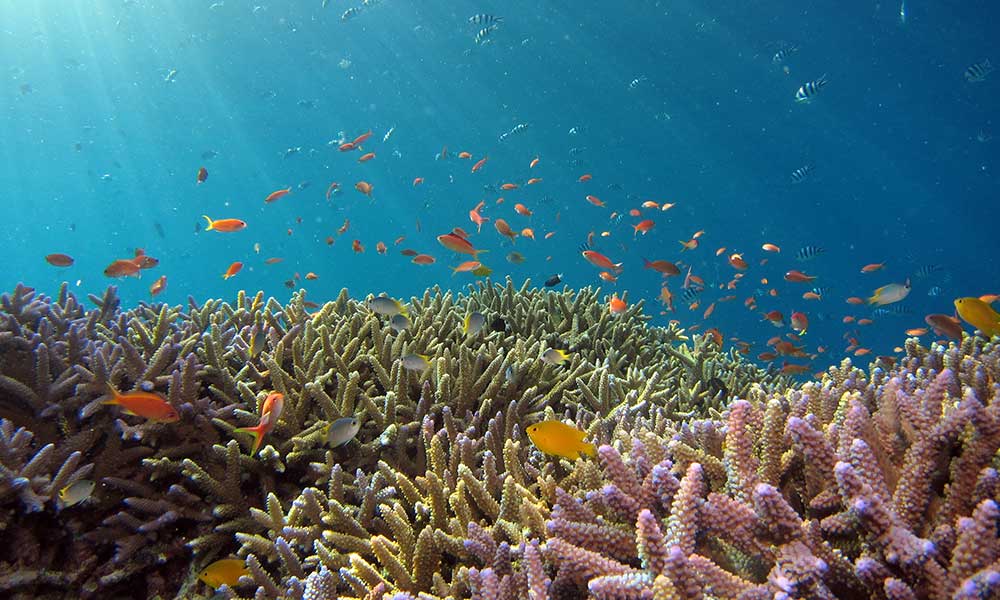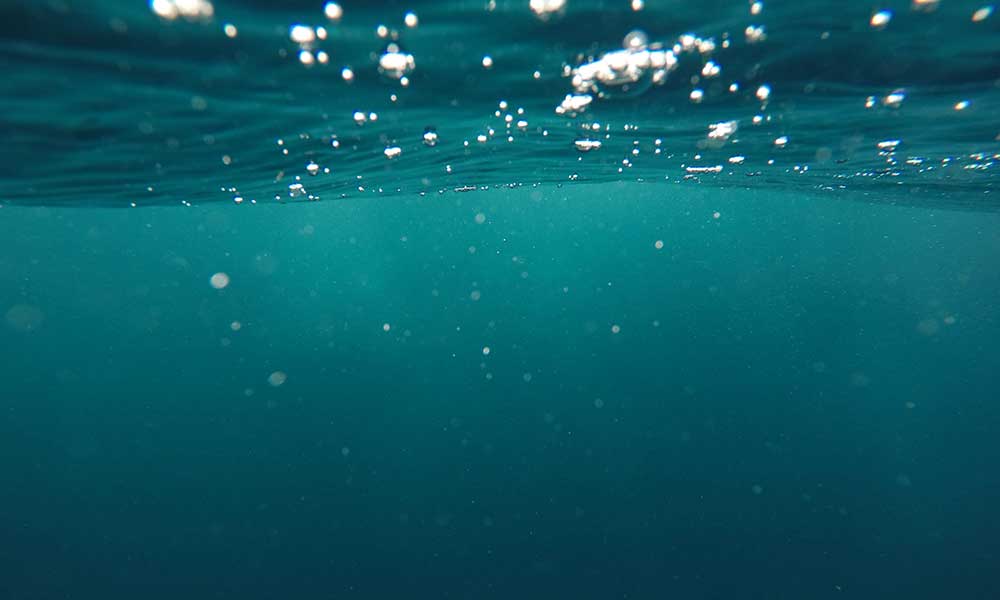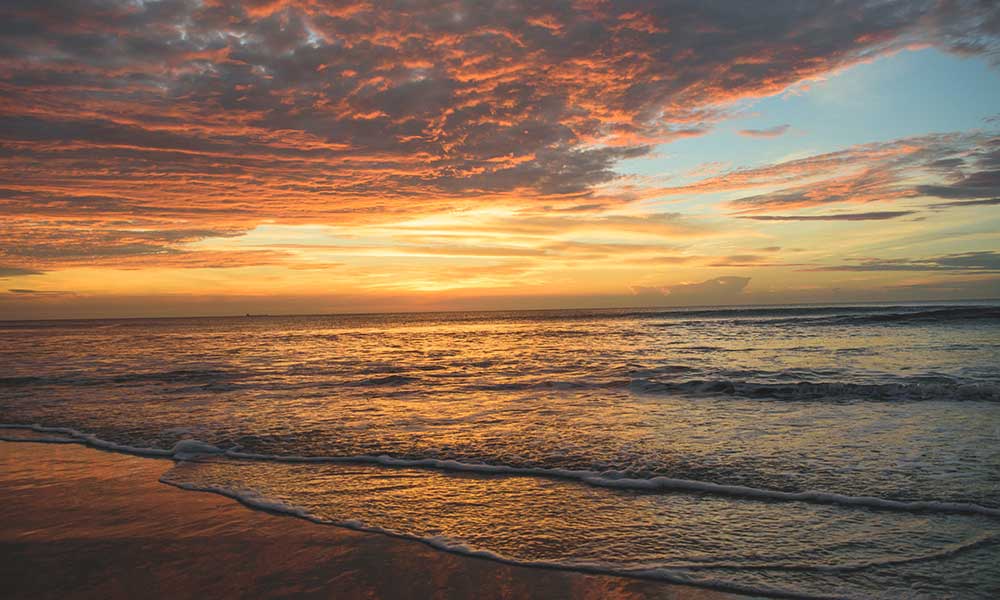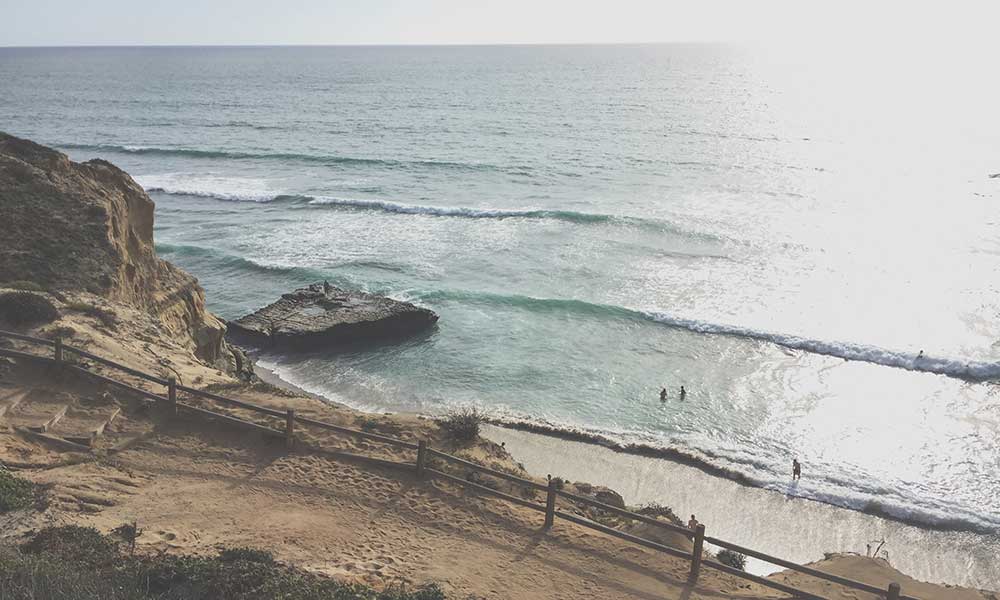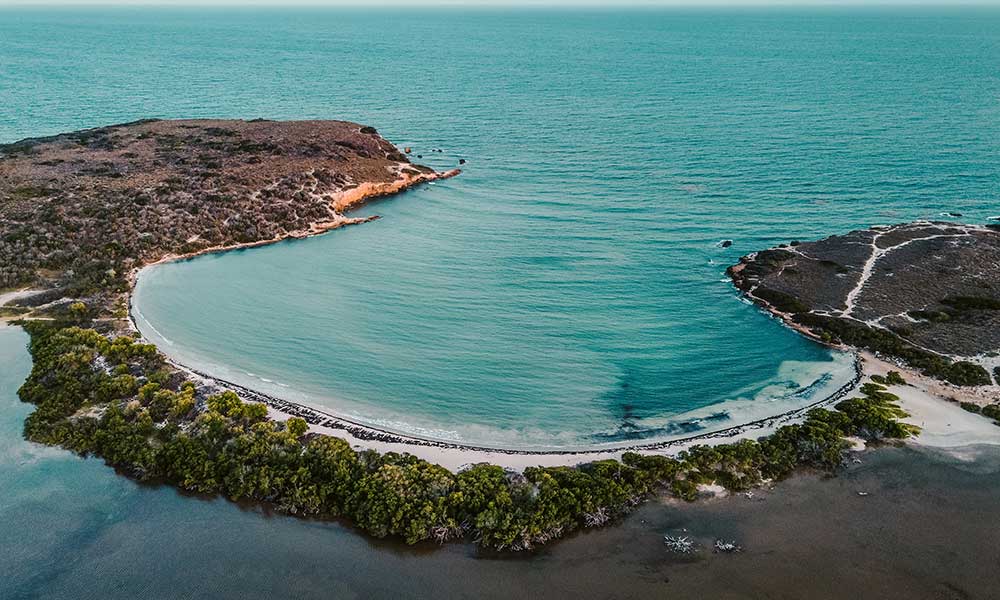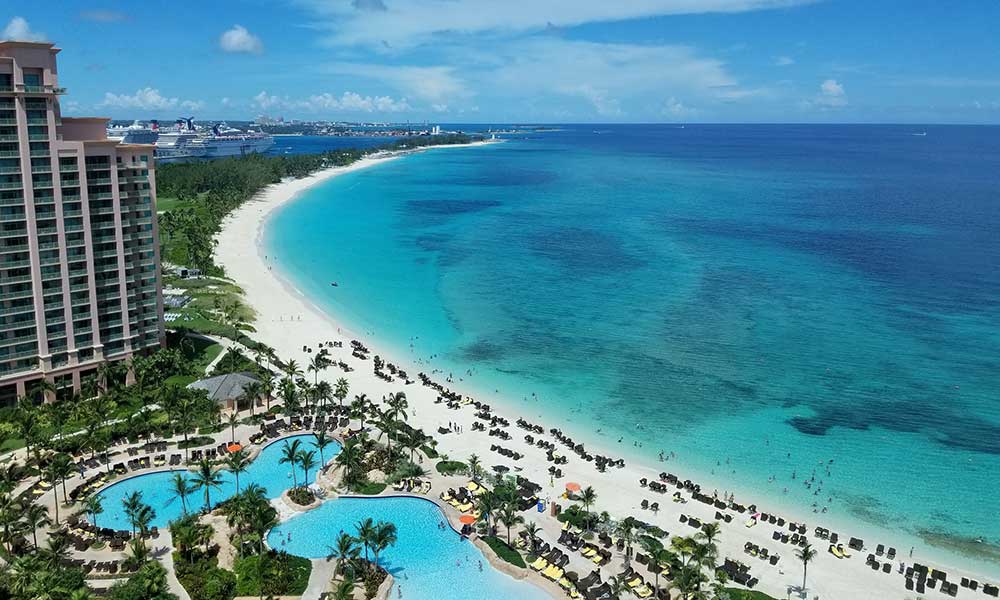While scuba divers are free to explore the depths of the ocean, snorkeling is easy enough for the kids and thrilling enough for even the most seasoned traveler. Whether you’re taking a keen marine biologist to examine a reef ecosystem or want to get familiar with a friendly shark, snorkeling is a great way to get back to nature.
If you are new to snorkeling you may be uncertain where to find prime snorkeling sites across the world. We can help you with our below information describing some of the most popular, well know, and spectacular snorkelling sites.
The 20 Best Places To Snorkel In The World
From snorkeling with manta rays in the Maldives to swimming with the majestic whales in the Dominican Republic and being enveloped by vibrant schools of fish in the Caribbean, these are some of the best places to snorkel around the world to help you plan your next adventure.
1. Raja Ampat, West Papua, Indonesia
Experts say there’s nowhere else in the world that compares, given that it has the world’s highest concentration of marine life for a region of its size and 75 percent of all known coral species. Snorkeling in this aquatic oasis with over 1,000 different species of fish, sea turtles, sharks, and manta rays means having the place primarily to yourself because the isolated islands are sparsely populated.
While swimming in the waters of this archipelago of 50,000 square kilometers of islands and water, snorkelers come face to face with fish and coral in every direction.
2. Komodo National Park, Indonesia
Though the Komodo dragons are regarded as the celebrities of Komodo National Park, the snorkeling here is not to be overlooked. This Indonesian national park’s coral reefs and islands have been designated as a World Heritage Site for more than 30 years, allowing their abundance of underwater life and corals to flourish.
The area is also rich in nutrients because of the cold water that flows into the area from the Indian Ocean, nourishing marine life.
3. The Galapagos Islands, Ecuador
Unlike most places on this list, snorkeling in Ecuador’s Galapagos Islands isn’t focused on vibrant coral and tropical fish. This is the spot to see larger marine life, such as sea lions, sharks, dolphins, turtles, and even penguins.
The Galapagos Islands, which served as the foundation for Charles Darwin’s Theory of Evolution, provide snorkelers with fascinating and unique mammals both on land and beneath the sea. Because of the islands’ remote location, the underwater wildlife is friendly and approachable since they don’t come into contact with humans very often.
4. The Coral Triangle, Asia Pacific
The Coral Triangle, which stretches from Eastern Borneo to Bali, the Philippines, Indonesia, and the Solomon Islands, is the world’s marine biodiversity epicenter. It is home to 75 percent of all known coral species and covers 647 million hectares of land and sea.
The fact that you don’t have to go deep to see the area’s 2,000 species of tropical fish, which swim just below the surface, makes it ideal for snorkelers. Most of the world’s marine turtle species are also found in the region.
5. Bay of Donsol, The Philippines
With over 7,000 islands, choosing the best snorkeling spot in the Philippines can be challenging. This decision is particularly difficult when the waters surrounding the archipelago have a vast ecosystem teeming with incredible wildlife. Snorkel alongside the world’s largest living fish, the whale shark, in the Bay of Donsol, located in the Sorsogon province of the northern Philippines.
These protected animals reside in Donsol Bay between November and June, feeding on the rich nutrients from the river’s mouth. Snorkelers can see up to twenty whale sharks on a single boat tour.
6. Silver Bank, Dominican Republic
Silver Bank is one of the only spots on the planet where people can swim and snorkel alongside humpback whales. It is located in a relatively shallow section of the Caribbean Sea, making it inaccessible to large ships. As a result, the North Atlantic humpback whale population can mate and give birth safely.
When the humpback whales pass through the area between December and April, snorkelers can catch a glimpse of them.
7. Palau, Micronesia
Jellyfish Lake in Palau is the place to be. A boat trip and a short hike will bring you to this unusual and remote lake, which is home to millions of harmless jellyfish. But it’s not just the jellies that make this Micronesia island a popular snorkeling spot.
Palau’s reefs are home to a diverse range of habitats. Marine life such as turtles, fish, manta rays, and sharks can be seen by visitors.
8. Great Barrier Reef, Australia
The Great Barrier Reef is well-known to everyone. However, its popularity is not without merit, and it should not be overlooked. It is the world’s largest coral reef ecosystem, stretching over 2,300 kilometers and comprising 2,900 individual reefs. It has been around for half a million years. Snorkelers can easily access the reefs here, teeming with a diverse array of fish and coral.
The water is warm, making it ideal for exploring the unparalleled underwater scenery. Unfortunately, scientists believe it could become extinct as soon as 2050 due to climate change. They claim that rising carbon dioxide levels in the atmosphere are warming the oceans and bleaching the reef’s corals to death.
9. Solomon Islands
The Solomon Islands, at the eastern side of the Coral Triangle, is a popular diving destination. These islands are renowned for so many sunken warships; some of the most bitter South Pacific battles of World War II took place here.
But the Solomon Islands are also a fantastic snorkeling destination. Breathtaking reefs filled with sea life such as giant eagle rays, sharks, barracuda, and batfish can be found off the coast of Uepi Island and Mary Island.
10. Isla Holbox, Mexico
Isla Holbox, a sleepy island off Mexico’s Yucatan Peninsula, is the world’s top destination for whale shark swimming. Whale sharks survive on plankton during the summer. This is when snorkelers can swim alongside the massive fish, some of which can grow 60 feet long.
The island is well-known for its environmentally sound tourism practices. There are no cars in this area, only golf carts.
11. Kealakekua Bay, Hawaii
There are many great snorkeling spots in Hawaii, but Kealakekua Bay has a history as well as vibrant coral, colorful fish, turtles, and dolphins. The best location to see marine animals is right in front of the onshore Captain Cook Monument, a stark white obelisk erected near the site where native Hawaiians killed famed circumnavigator James Cook in 1779.
The small bay can be reached in three ways: by foot down a rugged jungle trail, paddle on a rented kayak, or guided tour offered by a select group of companies licensed to operate in these protected waters.
12. Grenada, The Caribbean
Molinere Sculpture Park, located on the Caribbean Island famous for its spices, lush mountains, and scenic cliffs, is home to the world’s first marine sculpture garden.
An assortment of ecological, subaqueous contemporary art at the sandy bottom of Molinere Bay is a short thirty-minute boat ride from Pink Gin Beach in Grenada. These coral-covered cement sculptures, including the famous ring of children holding hands, are teeming with colorful fish and provide a truly unique underwater experience.
13. Baa Atoll, Maldives
The Maldives, located southwest of India, has some of the most beautiful islands in the world, and their beauty extends beyond the white sand beaches. These picturesque coral islands are surrounded by aquamarine waters, home to hundreds of colorful fish species and other marine animals such as sharks, octopi, and manta rays.
One of the Maldives’ 26 geographical atolls is Baa Atoll, a UNESCO Biosphere Reserve. It is home to one of the largest groups of coral reefs in the Indian Ocean, and hundreds of manta rays congregate to feed on the zooplankton trapped in the bays from June to November.
14. Madang, Papua New Guinea
Papua New Guinea is a tropical country north of Australia in the Coral Triangle, also known as the ocean’s Amazon. Papua New Guinea and its offshore islands inspire awe simply because of their remote location. The country has over 700 tribes and is equally diverse beneath the seas. The reefs have remained pristine and plentiful because Papua New Guinea is not overcrowded.
Planet Rock, a volcanic seamount just offshore from Madang, is teeming with barracuda, tuna, snapper, and reef sharks. There are also some World War II wrecks nearby to explore if you enjoy diving.
15. Maui, Hawaii
Maui’s lush island has unique lava rocks and coves that provide a one-of-a-kind experience. Snorkeling can be done from the island’s beaches or at popular reefs to see technicolor fish, sea turtles, and coral formations.
A short distance from the Four Seasons Resort, the Ahihi Kinau Natural Area Reserve on Maui is great for beginners to learn about underwater life. The Molokini Crater, a half-submerged, crescent-shaped caldera a few miles from Maui’s shores, has calm waters and visibility of up to 100 feet. Inside the crater’s arms, you can encounter rainbow fish, eagle rays, monk seals, and sea turtles.
16. Bora Bora, French Polynesia
Bora Bora has crystal clear waters, pure white sand beaches, and plenty of opportunities to get up close and personal with stingrays right from your overwater bungalows. These “water puppies,” as they are colloquially known, live in the warm waters that surround Bora Bora and neighboring islands. They have a charming attraction to humans and often approach you for attention.
If you’ve ever wanted to get up close and personal with sharks, these sunlit, shallow tropical waters are teeming with blacktip reef and lemon sharks, as well as a variety of turtles and colorful reef fish.
17. Isla del Cocos, Costa Rica
Cocos Island National Park, located 340 miles off the Pacific coast of Costa Rica, is a UNESCO World Heritage site and the only tropical rainforest island in the eastern Pacific. It is nicknamed “Treasure Island” because it was a former hideout for pirates hundreds of years ago, and it is now renowned for its natural treasures.
The island’s emerald waters are home to incredible marine life that thrives among the extinct volcano’s tunnels, caves, and coral reefs. Cocos Island is regarded as one of the best places in the world to snorkel and dive with pelagic species such as manta rays, moray eels, bottlenose dolphins, whale sharks, and schools of hammerhead sharks.
18. Los Cabos, Mexico
Los Cabos is found at the southern tip of Mexico’s Baja Peninsula, between the Pacific Ocean and the Sea of Cortez. Cabo Pulmo, a protected National Marine Park and UNESCO World Heritage Site on the East Cape, has one of North America’s three coral reefs.
Cabo Pulmo’s reef ecosystem is estimated to be 20,000 years old, with 800 species of marine wildlife, making it an ideal snorkeling destination to see parrotfish, angelfish, damselfish, dolphins, sharks, and whales.
19. Devil’s Crown, Galapagos
The underwater kaleidoscope of fish, eagle rays, and shy reef sharks at Devil’s Crown, an extinct sunken volcanic cone near Floreana Island, attracts snorkelers and divers. The Galápagos Islands are located 600 miles west of Ecuador in the Pacific Ocean. The nickname was derived from the circular formation of jagged lava rocks in the area.
Within minutes of snorkeling at Devil’s Crown, you’ll see a plethora of sea life, including sea turtles and eagle rays “flying” above lavender and green-colored coral reefs. You might even see hammerhead sharks if you venture outside the crown. Just be careful – the currents are strong – and make sure an experienced guide accompanies you.
20.Bermuda
This tiny British Overseas Island in the middle of the Atlantic, nicknamed Devil’s Island by sailors, allows wreck enthusiasts to get up close and personal with these underwater marine and coral reef havens. While Church Bay and Tobacco Bay are ideal for snorkeling in calm waters right off the beach, those looking for shipwrecks must book a boat and travel a few miles offshore.
The water temperature is usually 28 degrees Celsius during the summer, and visibility is up to 80 feet, allowing for excellent viewing of colorful tropical fish. Those looking for adventure can continue to snorkel in wet suits from January to March.

